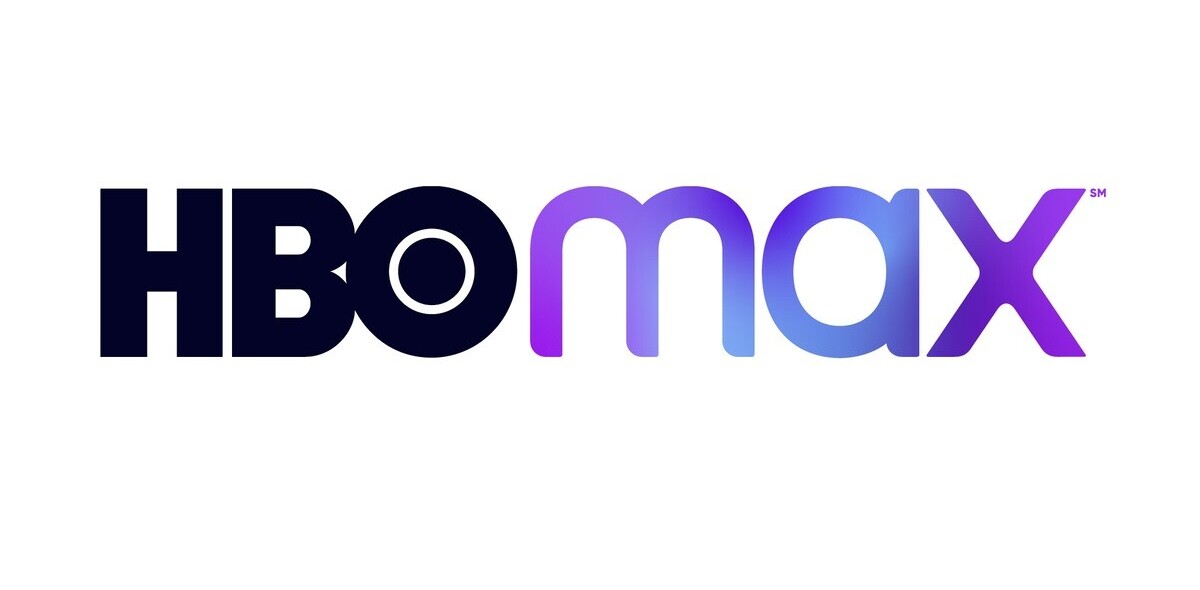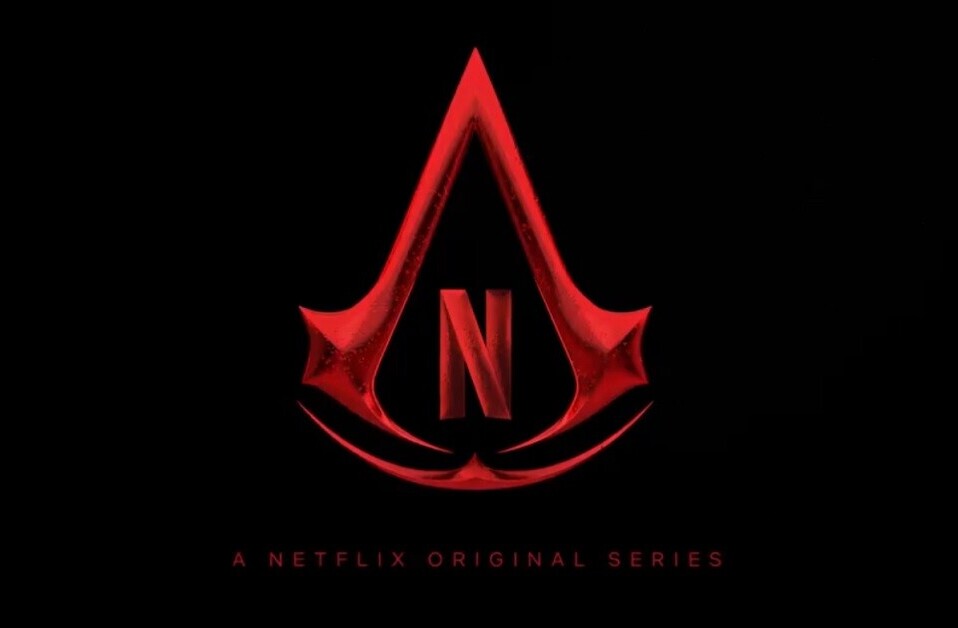
At this very moment, there’s massive change happening in the way movies and TV are consumed. Videos are becoming an entirely social experience. The future of television is one where viewers watch, share and discuss videos with friends simultaneously.
But we’re not the only ones that realize this; there are a ton of startups competing for you and your friends’ attention. Everyone’s gunning for the same thing, and honestly there isn’t room for all of these services to co-exist. In case you’re still unsure of what Social Video is, it’s time you found out. One of TNW’s Editors, Paul Sawers explains:
Social video is “a bringing together of content and conversation. It’s an evolution of ‘viral’ and it has grown up a lot now; it’s content that sparks conversation, it’s content that people want to be associated with through their social media profiles. It’s something that draws the viewer towards it, rather than being pushed in front of people.”
Shelby.tv
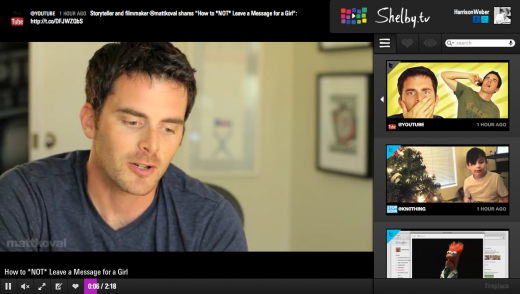 Shelby.tv is a TechStars graduate that has received tons of attention for its simplicity and beautiful design. According to TNW Editor Courtney Boyd Myers:
Shelby.tv is a TechStars graduate that has received tons of attention for its simplicity and beautiful design. According to TNW Editor Courtney Boyd Myers:
Shelby.tv is like watching TV or gazing into a magic ball of all the videos your friends post on Facebook and Twitter. It’s a browser-based service that pulls in videos from YouTube, Vimeo, Dailymotion, Blip.tv and TechCrunchTV that have been posted by your friends and the people you follow on your social networks. Shelby pulls in full embeds, including ads, providing publishers with greater distribution without disrupting their business models.
VHX
 VHX has done a great job building a service that feels clean and easy to use. VHX’s branding is particularly nice, with a retro, 3D feel. But, VHX doesn’t feel as smoothy integrated into my social graph as Shelby.tv.
VHX has done a great job building a service that feels clean and easy to use. VHX’s branding is particularly nice, with a retro, 3D feel. But, VHX doesn’t feel as smoothy integrated into my social graph as Shelby.tv.
Shelby.tv requires users to login with Facebook or Twitter. After logging in, all of your friend’s videos are already there. On VHX, integration isn’t required, and even after Facebook and Twitter are integrated, users won’t automatically see their friend’s names next to shared videos (you need to hover your mouse over a thumbnail first); it’s something that really affects the experience. On the plus side, VHX allows users to follow specific friends, which helps filter out noisy sharers.
Boxee
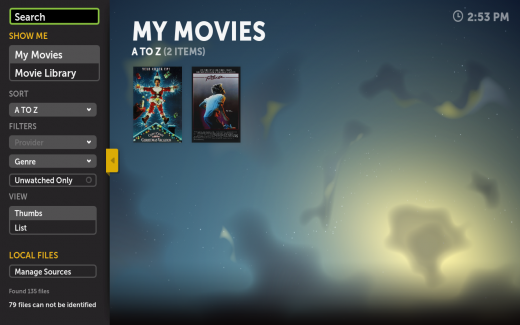 Boxee, which continues to be one of the easiest ways to bring movies, TV shows, photos and music from the web to your TV, has become increasingly social over time. Boxee allows you to “connect your social life to your TV to get recommendations from your friends on Facebook and Twitter.” Boxee believes that it helps you “never miss out on the latest funny video, and if you find a new gem, share it with your friends with a click of the remote.”
Boxee, which continues to be one of the easiest ways to bring movies, TV shows, photos and music from the web to your TV, has become increasingly social over time. Boxee allows you to “connect your social life to your TV to get recommendations from your friends on Facebook and Twitter.” Boxee believes that it helps you “never miss out on the latest funny video, and if you find a new gem, share it with your friends with a click of the remote.”
Boxee’s social integration is still weaker than it should be, but I believe it’s headed in the right direction as a viable competitor. Check out TNW’s review of the Boxee Box here.
Showyou
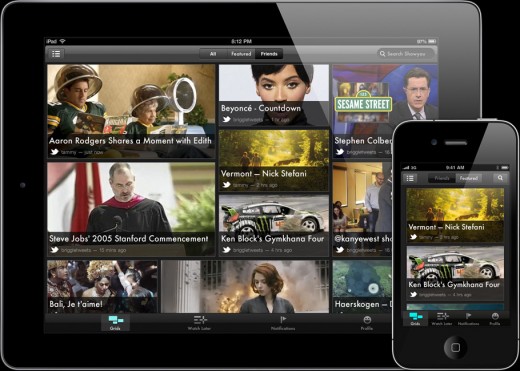 Showyou, another app that lets you watch videos with your friends, has roughly the same goals as VHX and Shelby.tv, but with a complete focus on the iPhone, iPad and Kindle Fire. Showyou’s browsing interface bests its competitors, thanks to a Flipboard-like grid layout that makes finding videos effortless. The lack of traditional browser support, though, is a little disappointing.
Showyou, another app that lets you watch videos with your friends, has roughly the same goals as VHX and Shelby.tv, but with a complete focus on the iPhone, iPad and Kindle Fire. Showyou’s browsing interface bests its competitors, thanks to a Flipboard-like grid layout that makes finding videos effortless. The lack of traditional browser support, though, is a little disappointing.
Miso
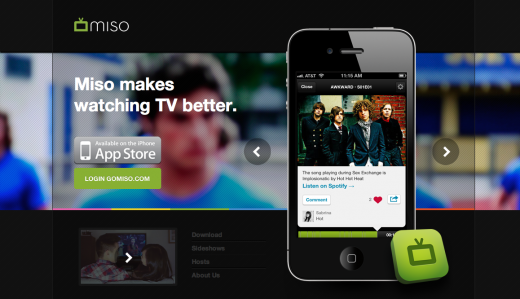 Miso hopes to make watching regular TV more fun. The recent release of Miso Slideshows, a new platform that allows viewers to interact with TV shows using their phones, may be a major step towards making traditional TV social. At the moment, Miso has already secured deals with Showtime, FOX, Food Network, DIRECTV’s Audience Network, Halogen, Science Channel, and CBS Television Distribution. It’s an impressive list of partnerships that could help keep traditional networks current in the modern age.
Miso hopes to make watching regular TV more fun. The recent release of Miso Slideshows, a new platform that allows viewers to interact with TV shows using their phones, may be a major step towards making traditional TV social. At the moment, Miso has already secured deals with Showtime, FOX, Food Network, DIRECTV’s Audience Network, Halogen, Science Channel, and CBS Television Distribution. It’s an impressive list of partnerships that could help keep traditional networks current in the modern age.
It is noteworthy that Miso’s goals seem very similar to Umami.
YouTube
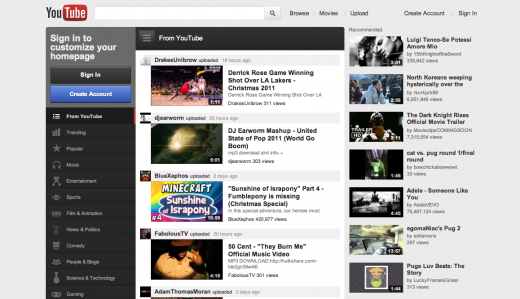 YouTube, the reigning king of online video, is close to creating a perfect social video experience. It’s already starting to integrate with Google+, and is now working on improving the content side of the experience. If YouTube can develop more original, quality content, while growing on televisions like Eric Schmidt said it will, competing services (even just curators) will be in trouble.
YouTube, the reigning king of online video, is close to creating a perfect social video experience. It’s already starting to integrate with Google+, and is now working on improving the content side of the experience. If YouTube can develop more original, quality content, while growing on televisions like Eric Schmidt said it will, competing services (even just curators) will be in trouble.
While social video is inevitably the future, how it evolves is still up in the air. Who do you think will dominate video in the future? Does YouTube or even a social curation service like Shelby.tv have a chance of taking down the traditional television industry? Let us know in the comments below!
Get the TNW newsletter
Get the most important tech news in your inbox each week.
